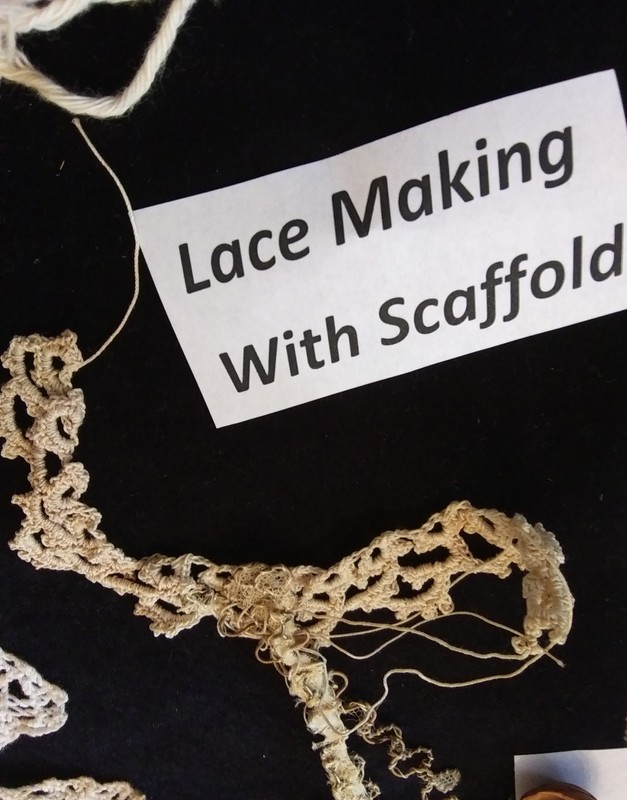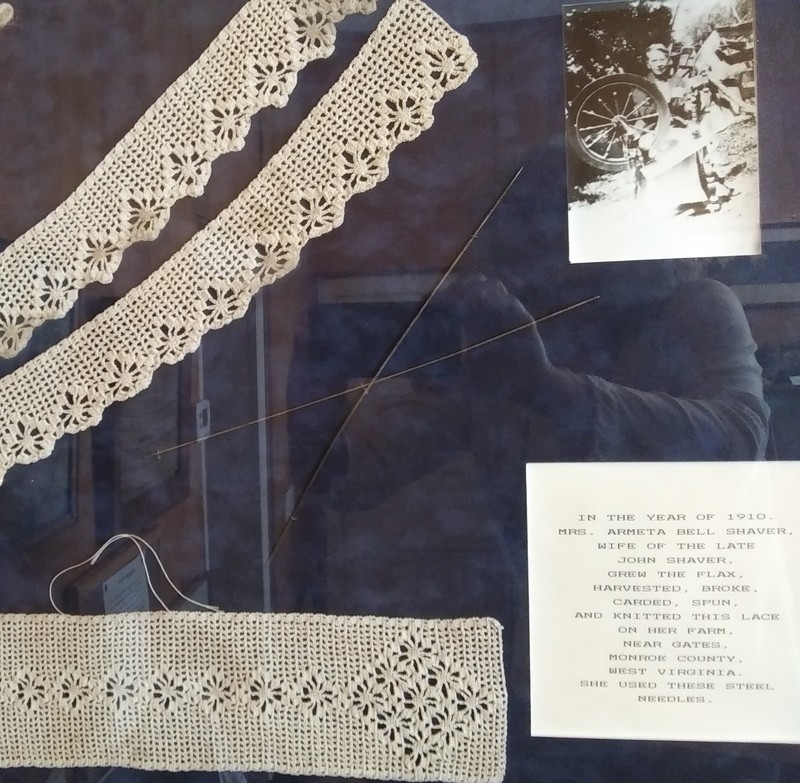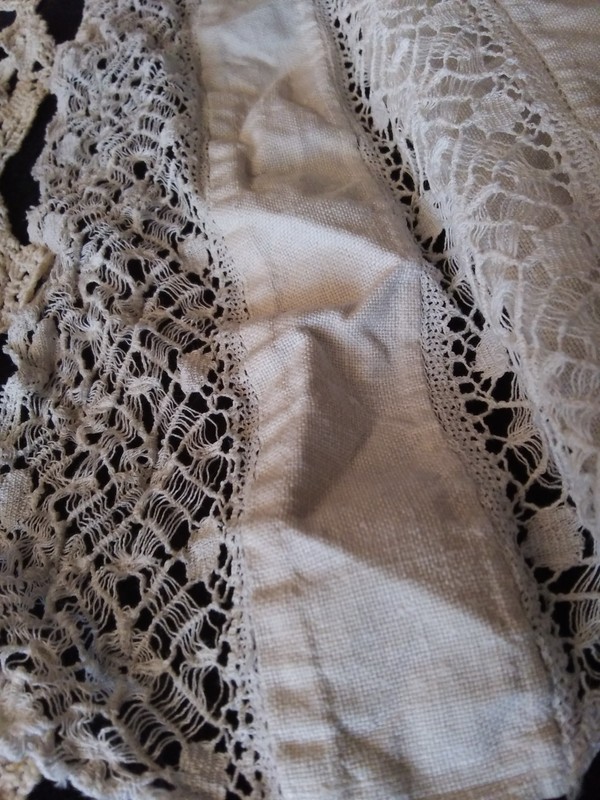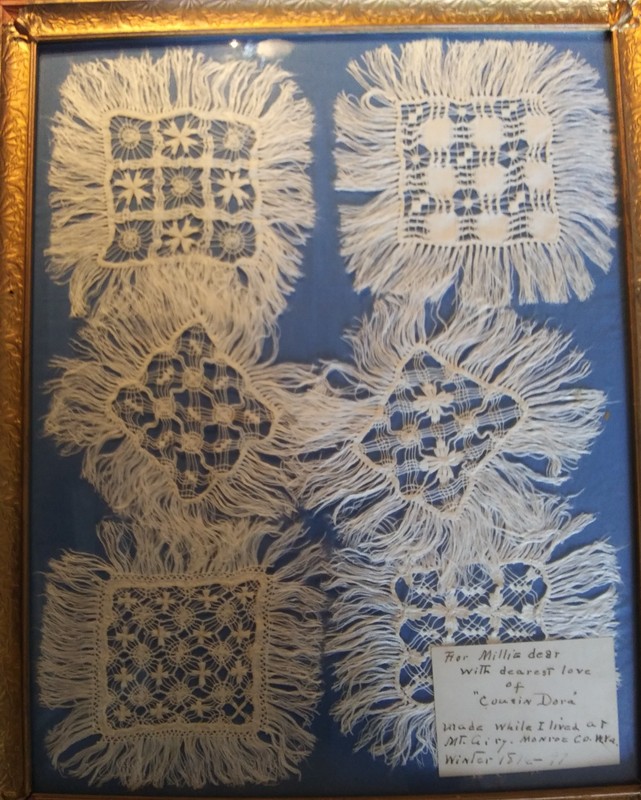Fabric Arts
Introduction
Text-to-speech Audio
Early settlers made the material to make their clothing. The wool from the sheep was clipped, washed, and dried. Many of the women would gather together to "pick" the dirt and burrs out of the wool. The wool was then carded and spun, then woven. Winter clothes were often wool. A patch of flax was sown in springtime. The flax was pulled, spread out to take rain, then broken with a flax hackle, spun into thread, and woven. Summer clothes were often linen. Cotton could be purchased by the bale, dyed to color, and then warp the web and put onto the loom. An extensive amount of work and time was needed to create cloth. It became a symbol of status to be able to use cloth for table runners, or to make decorative lace for clothing or furniture.
Images
Lace making with scaffold

Knitted Lace

Pulled-thread linen table scarf

Sampler

Lace tablerunner

Backstory and Context
Text-to-speech Audio
The pictures in this entry shows samples of decorative fabric art on display at the museum, including:
- Lace making using a very small,thin, scaffold to keep the threads separated and help with the design.
- Knitted lace made by Armita Bell in 1910. She grew the flax, harvested, broke, carded, spun and knitted the lace.
- A pulled-thread linen table scarf from the Johnson estate.
- The Sampler of six lace squares showing a mix of pulled-thread, drawn-work and cutwork needlework was made during the winter of 1896-1897 by "Cousin Dora".
- In pulled-thread work warp and weft threads of the base material are pulled together to make small holes by tightening stitches. The decorative effect is created by applying tension to the stitching thread and pulling the thread tight. The more tension applied, the wider the open area. Pulled thread has also been called drawn fabric
- Cutwork involves cutting-away sections of the base material. It may be resulting "hole" is reinforced and filled with embroidery or needle lace. Cutwork is often referred to as cutwork lace.
- Drawn thread work is a form of counted-thread embroidery which specific warp and/or weft threads are permanently removed from the ground material. The remaining threads are grouped or bundled together into patterns.
- A knitted lace table runner by Esta Broyles, born 1861. The runner is 12 inches wide and 42 inches long. Esta began weaving before the age of six, making coverlets, linen cloth, and linsey-woolsey in the family loom house.
Sources
Halley, Lorelei. www.lynxlace.com. January 1st 2009. Accessed May 6th 2021.
"Popular Science Monthly", Vol. 8, March 1876, via website
Wikisource.org, "Lace and Lacemaking"
Miller, Everett W.. Genealogy of Jacob Miller And His Descendants. Huntington, WV. Cook Printing Company, 1937. Customs and Usages of Those Times, pg. 68-69.
Textile research center trc-leiden.nl
